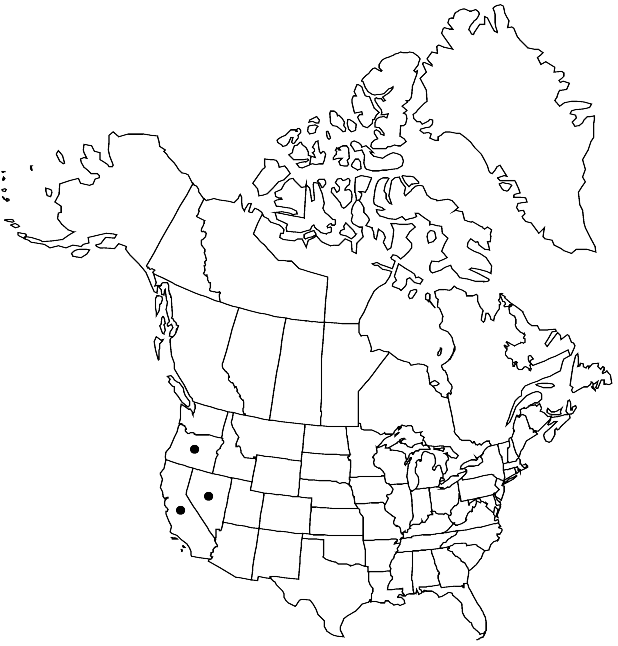Descurainia paradisa
in H. G. A. Engler, Pflanzenr. 86[IV,105]: 331. 1924.
Annuals; glandular or eglandular; sparsely to densely pubescent, trichomes dendritic. Stems erect, branched basally and distally, (often purplish), (1–) 1.5–3.2 (–4.1) dm. Basal leaves (soon withered); petiole 0.3–1.3 cm; blade pinnate, oblanceolate to obovate in outline, 1.5–3 cm, lateral lobes oblong to linear or lanceolate, (1–5 × 0.3–1 mm), margins entire or dentate. Cauline leaves sessile; blade smaller distally, distal lobes often narrower, surfaces moderately to densely pubescent. Racemes considerably elongated in fruit. Fruiting pedicels divaricate to ascending, straight, 2.5–7 (–9) mm. Flowers: sepals spreading to ascending, pale-yellow, oblong, 0.8–1.2 mm, pubescent; petals oblanceolate, 0.9–1.3 × 0.2–0.5 mm; median filaments 0.8–1.2 mm; anthers 0.1–0.2 mm. Fruits divaricate to erect, usually obovoid to clavate, rarely broadly ellipsoid, not torulose, 2–5 × 1–2 mm, (acute basally, obtuse apically); valves each with obscure midvein; septum not veined; ovules 4–10 per ovary; style 0.05–0.3 mm, glabrous. Seeds uniseriate or biseriate, brown, oblong, 0.8–1.2 × 0.5–0.6 mm.
Phenology: Flowering Apr–Jun.
Habitat: Shrub communities, sandy washes and dunes, roadsides
Elevation: 1000-2300 m
Distribution

Calif., Nev., Oreg.
Discussion
Although L. E. Detling (1939) reduced Descurainia paradisa to a subspecies of D. pinnata, molecular data (B. E. Goodson 2007) clearly show that it should not be included in that species. The boundaries of D. paradisa in its northern and southern ranges tend to be blurred relative to D. nelsonii and D. pinnata, respectively.
R. C. Rollins (1993) and N. H. Holmgren (2005b) recognized some of the Nevada plants of Descurainia paradisa that have eglandular racemes as a subspecies and variety (nevadensis), respectively. This poorly delimited division of the species is artificial, and both glandular and eglandular forms are sometimes found within individual populations of most species. They also indicated that nevadensis has styles 0.2–0.3 mm (versus 0.05–0.15 mm in D. paradisa), but this distinction is equally unreliable. Indeed, the style length and the presence versus absence of glands are not inherited together. Some of the eglandular plants have styles to 0.1 mm (e.g., Williams & Tiehm 86-51-1, GH). It is likely that some of the plants identified as nevadensis are of hybrid origin involving other species, especially D. nelsonii.
Selected References
None.
Lower Taxa
"elongated" is not a number."thick" is not a number."dm" is not declared as a valid unit of measurement for this property."dm" is not declared as a valid unit of measurement for this property.